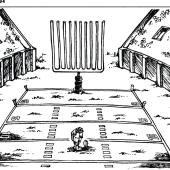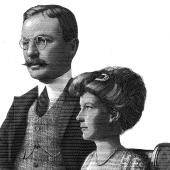Frank Macon: The Tuskegee Airman
Frank Macon always wanted to be a pilot. But, first, he had to overcome a massive obstacle.
Congress approved funds to train African American military pilots in April of 1939. In March of 1941, the War Department formed the 99th Pursuit Squadron, better known today as the Tuskegee Airmen. Later that year, Tuskegee Airman C. Alfred “Chief” Anderson took first lady Eleanor Roosevelt for a flight and made a believer of her.
In December of that year, the Japanese bombed Pearl Harbor.
Frank Macon applied to the Civilian Air Patrol while still in high school and soloed from the airfield that is now the Air Force Academy. Soon, he was headed to join the 99th; in fact, Frank may have been the only pilot accepted to Tuskegee twice, having been sent home the first time for lying about his age.
However, although discrimination in the armed services severely limited opportunities for Blacks, the greatest obstacle to Frank’s dream of becoming a pilot was school.
Frank was a severe dyslexic, making reading and math nearly impossible. He had an intensely curious mind, but hated school; instead of the boring three Rs, Frank said, “I expected kindergarten to start out with the principles of flight or something.” He flunked the second grade.
In fourth grade, he and his friends fashioned a rocket sled by affixing a water heater to a wagon and filling it with carbide.
Yet Frank was brilliant when it came to mechanics. He was fascinated by how things worked, constantly disassembling machines and toys. His babysitters took him flying at the age of four, at the Alexander Aircraft Company airport north of Fillmore. He drove a car at six; in fourth grade, he and his friends fashioned a rocket sled by affixing a water heater to a wagon and filling it with carbide.
At 10, Frank fashioned wings from bamboo poles and jumped off the chicken coop. At 11, he experimented with gear ratios by threading together spools nailed to the kitchen wall. He made a plane from orange crates and tried to fly it from Uintah Gardens.
Frank worked hard to develop techniques to be able to read and do math. Although he continued to struggle with dyslexia, he earned a two-year degree from the College of Tuskegee in less than four months. While there, he befriended George Washington Carver, the great agriculturalist. His prodigious flying skills, honed in the high winds of the Front Range, placed him in the pilot elite.
After accomplishing so much, Frank Macon, Tuskegee Airman, counted graduating from high school as his greatest achievement.





